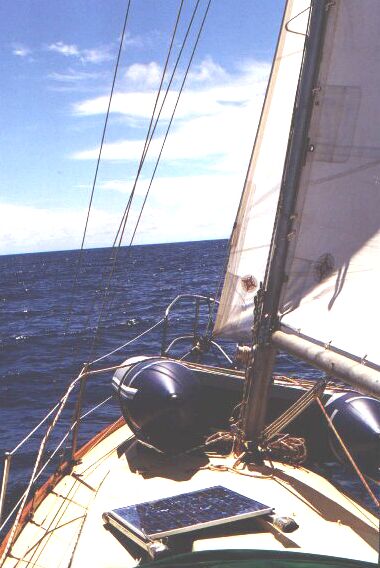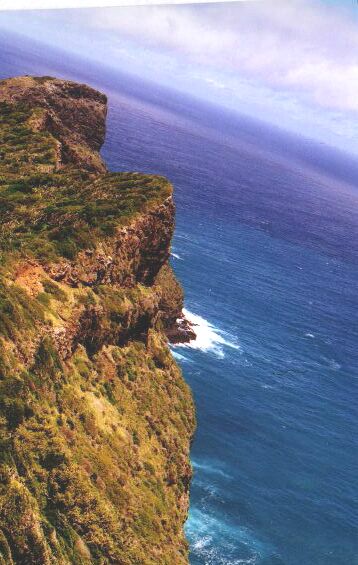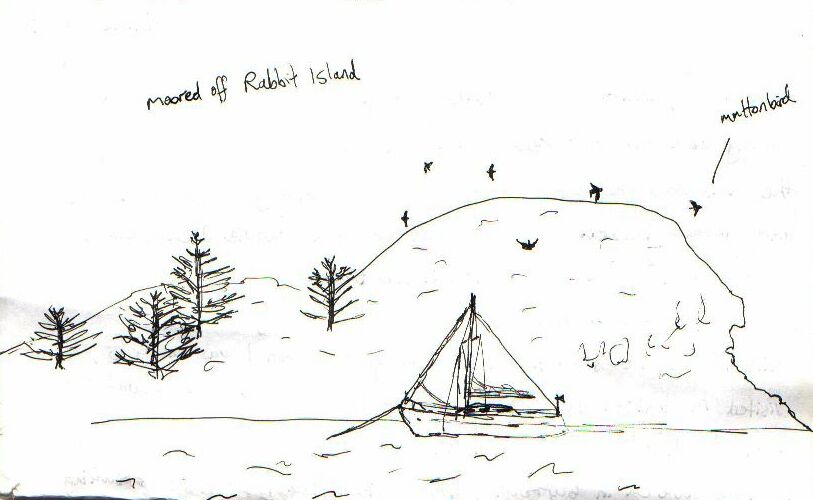
Aztec on the boat

Sailing past the Gold Coast

The sailor!

Catching a flying fish

At sea

Lord Howe Island


Sailing past the Gold Coast

The sailor!

Catching a flying fish

At sea

Lord Howe Island


Lord Howe Island represents the way the world, was supposed to be, not the way it is.
Less than two hours north-east of Sydney, roughly crescent shaped, it is approximately 11 km long and 2.8 km at its widest point, totalling 1,455 ha in area.
Two volcanic mountains dominate the landscape, the southern one rising to 875 metres from the sea: sheer black cliffs of basalt with steeply forested slopes. The northern part of the Island is a series of low hills which slope gently up from the west to a height of about 200m; on the eastern side they plunge as sheer cliffs to the sea. Several flat low-lying areas between the hills in the north & the mountains in the south provide land for settlement, and these areas have been partially cleared of forest. A shallow reef-fringed lagoon with white sandy beaches adds on idyllic touch to this island paradise.
First settled in 1834, the Island is still largely untouched forest, mainly due to the rugged terrain and the Island's isolation. In 1834 the first settlers arrived - three men with their Maori wives, and two lads. They lived by trading fresh vegetables, meat and fish with the passing ships. Not surprisingly, many of the following settlers were seafaring men. One of the first reports on the Island, made by Dr John Foulis in 1851 describes a community of about 16 persons residing on the Island, some of them having their wives and families.
The earliest houses were built of split palm battens laced with palm leaves and roofed with palm thatch. The first substantial house was that of Nathan Thompson, built in the 1860s from Australian cedar washed up on the beach some twenty years earlier. The house still stands today.
With the demise of the whaling industry in the 1870s, the collection and sale of palm seeds for the European indoor potted plant market became the mainstay of the Island's economy.
In 1981 the Australian government nominated Lord Howe Island for inclusion on the UNESCO World Heritage List. This list consists of properties of 'outstanding universal value' for world culture and heritage. Lord Howe Island's nominations stated that 'The islands have exceptional natural beauty. The diversity of the landscapes and biota and the high proportion of rare and endemic animals, plants and invertabrates make them an outstanding example of independent evolutionary processes from the point of view of science and conservation."
the large colonies of nesting seabirds
the most southerly coral reef in the world
the remarkable volcanic exposure with its great variety of upper mantle and oceanic basalts
and the populations of endangered endemic species, particularly the woodhen.
At a session of UNESCO World Heritage committee in Paris on 14 December 1982, the Lord Howe Island nomination was accepted & the Island was officially inscribed on the World Heritage List.
The island was selected by the World Heritage list as one of only four island groups in the world for it's "rare collection of plants, birds and marine life and exceptional natural beauty".
Measures such as limiting the number of tourist beds to 400, banning of cats, and prohibiting boats anchoring inside the lagoon is directed to maintain the World Heritage values of the island.

Mount Gower
Next page